What to do if Siemens SITRANS P320 shows INVALID CFG PARAM?
- DDustin MunozSep 23, 2025
If your Siemens Transmitter shows INVALID CFG PARAM, it indicates that the factory settings for Functional Safety are faulty. Replace the device.

What to do if Siemens SITRANS P320 shows INVALID CFG PARAM?
If your Siemens Transmitter shows INVALID CFG PARAM, it indicates that the factory settings for Functional Safety are faulty. Replace the device.
What to do if Siemens SITRANS P320 failure occurs due to "Out of service" mode?
If the Siemens Transmitter output signal does not represent the process value because the device mode is set to "Out of service", you should disable the "Out of service" mode and enable normal operation.
How to fix invalid device configuration on Siemens Transmitter?
If the Siemens Transmitter has an invalid device configuration because one or more parameters are set to invalid values, review the configuration values and adjust as necessary.
What to do if the Siemens SITRANS P320 Transmitter is in function test mode?
If the Siemens Transmitter output signal is temporarily invalid because work is being performed on the device, use manual mode over HMI or disable the engineering system.
Why is my Siemens SITRANS P320 showing 'Maintenance required'?
If you receive a 'Maintenance required' notification for your Siemens Transmitter, it means the output signal is still valid, but wear reserve is almost exhausted, or a function will soon be limited. It is recommended to schedule maintenance as soon as possible.
What does INVALID CFG LOOPT mean on my Siemens SITRANS P320?
INVALID CFG LOOPT on your Siemens Transmitter indicates that the loop current is fixed because loop test or multidrop mode are enabled. To return to normal operation, disable the loop test or multidrop mode.
What to do if the Siemens SITRANS P320 display is empty and there are no transmission pulses?
If the Siemens Transmitter display is empty and there are no transmission pulses, the cause may be no or incorrect supply voltage. Check the voltage at the terminals, the connections, and the wiring.
Why does my Siemens SITRANS P320 Transmitter display "#####" instead of the current measured value?
If the Siemens Transmitter displays "#####" instead of the current measured value, it means that the value is too large to appear on the display. Adjust the unit so that a lower value can be displayed, for example, by selecting bars instead of millibars.
What to do if Event counter 1 Number overruns above threshold Maintenance alarm on Siemens SITRANS P320?
The 'Event counter 1 Number overruns above threshold Maintenance alarm' on your Siemens Transmitter indicates that the number of overruns of the process value, which is set in the 'Upper limit' and 'Monitored value' parameters, has reached the specified threshold. To resolve this, reset and acknowledge the event counter, then check the process conditions and verify the limit monitoring and event counter settings.
What to do if Siemens SITRANS P320 is in safety validation mode?
If the Siemens Transmitter is in safety validation mode, complete the functional test and confirm that it was successful in the Functional Safety wizard.
| Accuracy | ±0.065% of span |
|---|---|
| Temperature Range | -40 to 85 °C (-40 to 185 °F) |
| Long-term Stability | ±0.1% of URL per 5 years |
| Communication | HART, PROFIBUS PA, FOUNDATION Fieldbus |
| Output Signal | 4 to 20 mA HART, PROFIBUS PA, or FOUNDATION Fieldbus |
| Process Connection | 1/2" NPT, G1/2, 1/4" NPT |
| Ingress Protection | IP66 |
| Display | Optional LCD display |
| Housing Material | Stainless steel, aluminum |
| SIL Suitability | SIL 2/3 |
| Power Supply | 10.5 to 45 V DC |
Step-by-step guide to commission the device without a display, covering mounting, connecting, and power supply.
Step-by-step guide to commission the device with display, including operating buttons and setting parameters.
Explains the manual's purpose and target audience, emphasizing careful reading before installation.
Details compatibility between manual edition, device revision, engineering system, and EDD for proper integration.
Highlights Siemens' commitment to industrial security and customer responsibility for network access and updates.
Provides guidelines for proper transport and storage to ensure device protection and prevent damage.
Emphasizes maintaining device in good condition and observing all safety instructions and specifications.
Details requirements for qualified personnel and safety measures for operating the device in hazardous environments.
Outlines the diverse applications of the pressure transmitter for measuring various gases, vapors, and liquids.
Details the physical components and construction of the device based on customer-specific orders.
Explains the information provided on the general and approval nameplates for device identification and specifications.
Explains the working principle of the pressure transmitter, covering electronics and measuring cell operation.
Crucial safety guidelines for installation, covering pressure applications, material compatibility, and operating pressure limits.
Provides detailed procedures for installing the pressure transmitter, including orientation and mounting bracket use.
Guides on installing remote seal systems, covering handling, connections, and potential issues.
Essential safety warnings for electrical connections in hazardous areas, including cable glands, conduit systems, and bonding.
Instructions for safely connecting the device, covering opening the compartment, electrical connections, and grounding.
Procedure for connecting an M12 cable socket, detailing preparation, crimping, and assembly steps.
Describes how to operate the device using buttons, view measured values, parameter values, and messages on the display.
Explains how to navigate the device interface, view measurements, and manage parameters using the display.
Describes methods for securing the device configuration, including jumper, user PIN, and button lock.
Critical safety warnings for commissioning, especially concerning toxic media, hazardous areas, and pending errors.
Step-by-step guide for commissioning with display, covering range, units, application, scaling, and zero point settings.
Illustrates practical commissioning steps for various applications like gauge pressure and differential pressure.
Provides a comprehensive overview of device parameters and functions accessible via local or remote operation.
Details how to assign parameters directly using the device display, covering units, range, damping, and application settings.
Explains parameter assignment using remote operation, including Quick Start wizard, simulation, and diagnostics.
Explains the safety concept, SIL levels, and operational modes for safety-instrumented systems.
Guides on enabling and validating Functional Safety, both via device display and remote operation.
Describes how to acknowledge safety-related errors and manage the device state after an error.
General safety precautions for device inspection, cleaning, and maintenance, emphasizing dust and hazardous area use.
Covers maintenance procedures, warnings about repairs, and handling of process media.
Details the process for returning devices, including required documentation and decontamination declarations.
Explains device status symbols and their meanings according to NAMUR and SIMATIC PDM standards.
Provides a table of diagnostic messages, their IDs, symbols, causes, and remedies for troubleshooting.
Offers solutions for common display issues and configuration errors, guiding users through troubleshooting steps.
Contains detailed input specifications for various pressure types, including measuring spans and operating pressures.
Specifies accuracy details for SITRANS P320, covering conformity errors, temperature effects, and stability.
Details accuracy specifications for SITRANS P420, covering conformity errors, temperature effects, and stability.
Specifies operating conditions for the device, including ambient temperature, climate class, and process medium temperature ranges.
Lists vibration resistance conditions according to various standards for different device series and enclosures.
Describes the materials and construction details of the device, including wetted parts, housing, and mounting options.
Provides torque specifications for connection points, mounting bracket screws, and enclosure rotation screws.
Provides dimension drawings for SITRANS P320/P420 gauge and absolute pressure transmitters from the gauge pressure series.
Provides dimensional drawings for SITRANS P320/P420 covering differential pressure, gauge pressure, flow, and absolute pressure.
Offers dimensional drawings for SITRANS P320/P420 devices used for level measurement.
Presents dimensional drawings for SITRANS P320/P420 pressure transmitters with front-flush connections.
Lists available product documentation formats: certificates, downloads, catalogs, and manuals.
Provides information on accessing technical support via online requests, website resources, and Siemens representative contact.
Overview of SIMATIC PDM, a tool for managing intelligent field devices, covering installation, configuration, and maintenance.
Procedure to disable FIFO buffers in Windows COM port settings for proper SIMATIC PDM operation.
Instructions for updating the EDD to match firmware revision, enabling access to device features in SIMATIC PDM.
Checklist step to document changing the preset user PIN from 2457 to a custom value.
Validate device identification and safety-related parameters against wizard values for proper configuration.
Validate the safety function using the wizard and record the date of validation for compliance.
Describes the intended use of sealing plugs and thread adapters for flameproof and dust protection equipment.
Highlights critical safety instructions for accessory parts, including assembly, modifications, and environmental suitability.
Provides detailed technical specifications for sealing plugs and thread adapters, including compliance, materials, and torque values.
Contains dimensional drawings for sealing plugs and thread adapters, specifying dimensions for M20, M25, and ½-14 NPT connections.
Abbreviation for 'Atmosphère explosible', relating to EU directives for explosion protection.
Defines auxiliary power supply as an electrical supply or reference voltage for specific circuits.
Defines a function executed by a safety-instrumented system to maintain a safe system state.
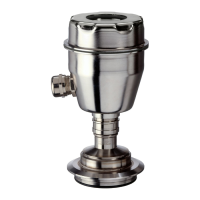

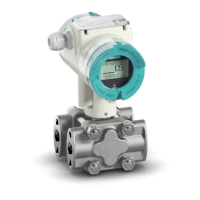

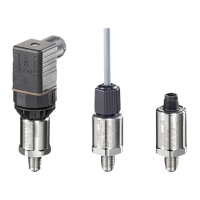


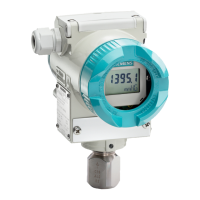
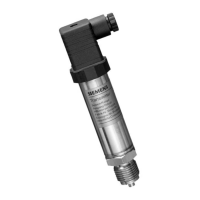
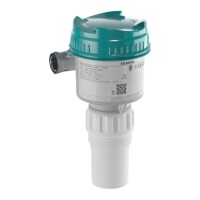

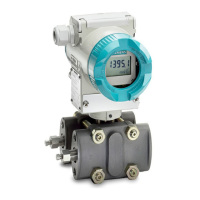
